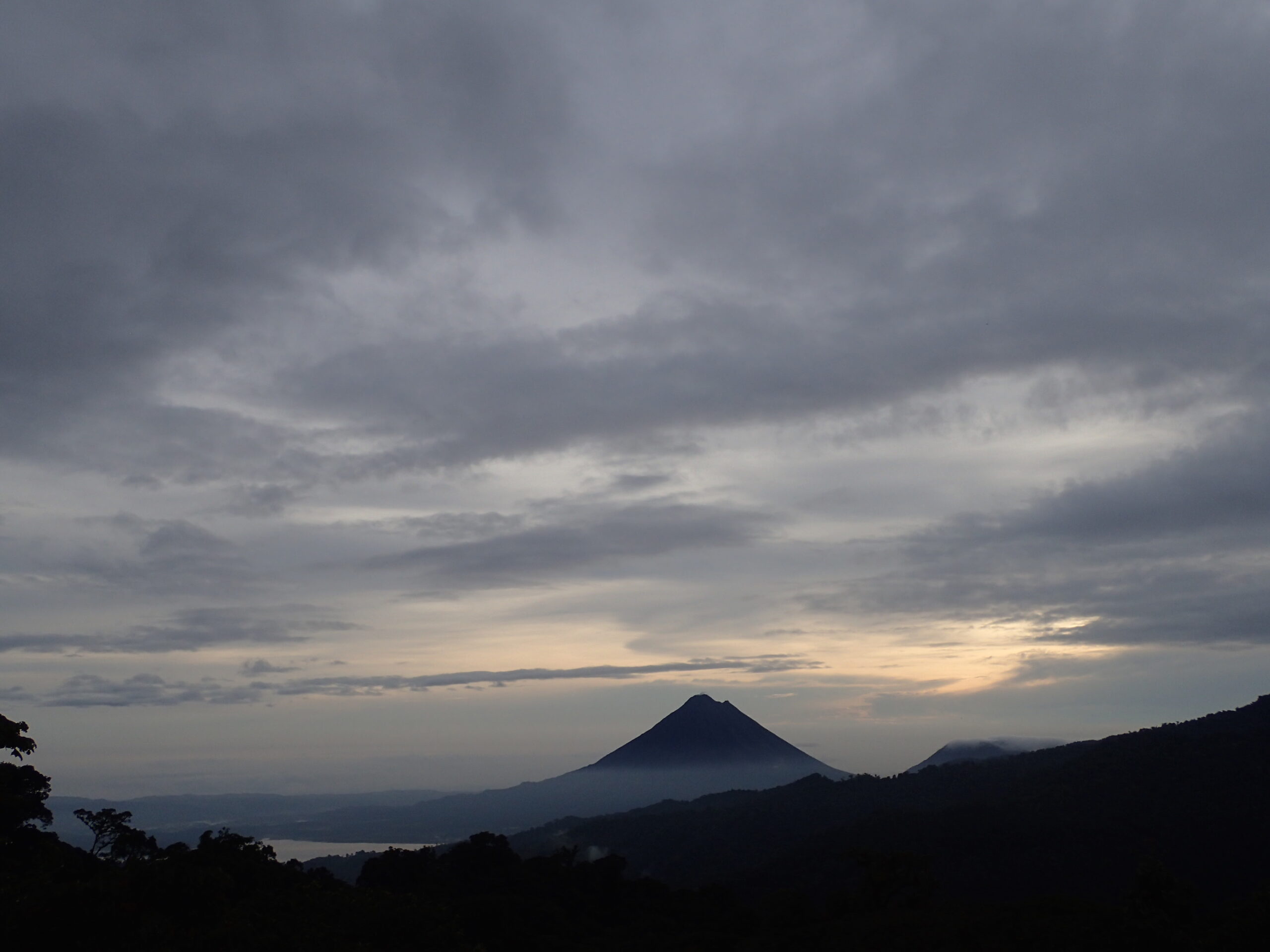
4 Years After Tropical Storm Nate: The Recovery of Macroinvertebrate Community Composition in a Neotropical Stream in Costa Rica
Skye E. Remko1, Seth J. Wenger1,2, Darixa Hernandez-Abrams3, & Amanda T. Rugenski1,2
1Odum School of Ecology, University of Georgia, 2River Basin Center, University of Georgia, 3U.S. Army Corps of Engineers, Engineer Research and Development Center Environmental Laboratory

Background
Tropical storms are predicted to increase in intensity and rainfall (Knutson, 2021). These more frequent intense disturbances have significant impacts on stream ecosystems and their macroinvertebrate communities (Gutiérrez-Fonseca et. al., 2018).
In October of 2017 Tropical Storm Nate devastated the Monteverde, Costa Rica area with 20.45 inches of rain falling in two days resulting in landslides, and canopy cover destruction. Our study stream, Alondra, was particularly devastated (Figure 1).
Question
How does the current composition of the macroinvertebrate community in Alondra compare to the community composition of the stream before Tropical Storm Nate?
Methods
We sampled 5 transects in a 100-meter reach. At each of the five transects we measured canopy cover, discharge, water pH, temperature, total dissolved solids, salinity, and conductivity. We collected macroinvertebrate samples (n=5) using a 250 𝑢m surber net. All samples were collected in September and October from 2016 to 2021.
We identified macroinvertebrates to the lowest possible taxonomic level in the lab (usually genus), and each individual was measured to the nearest mm to estimate biomass.
Hypothesis
As Alondra recovers, the 2021 macroinvertebrate community will have higher richness than 2018 & 2019 and will shift in community composition becoming more similar to pre-Nate.
Site Description
Alondra is a premontane perennial stream characterized by year-round flow during both the wet and dry seasons. It has a rocky bottom with large boulders, areas of pools and riffles, and is mostly shallow with some deeper pools. The gradient is steep, resulting in a fast-flowing stream.


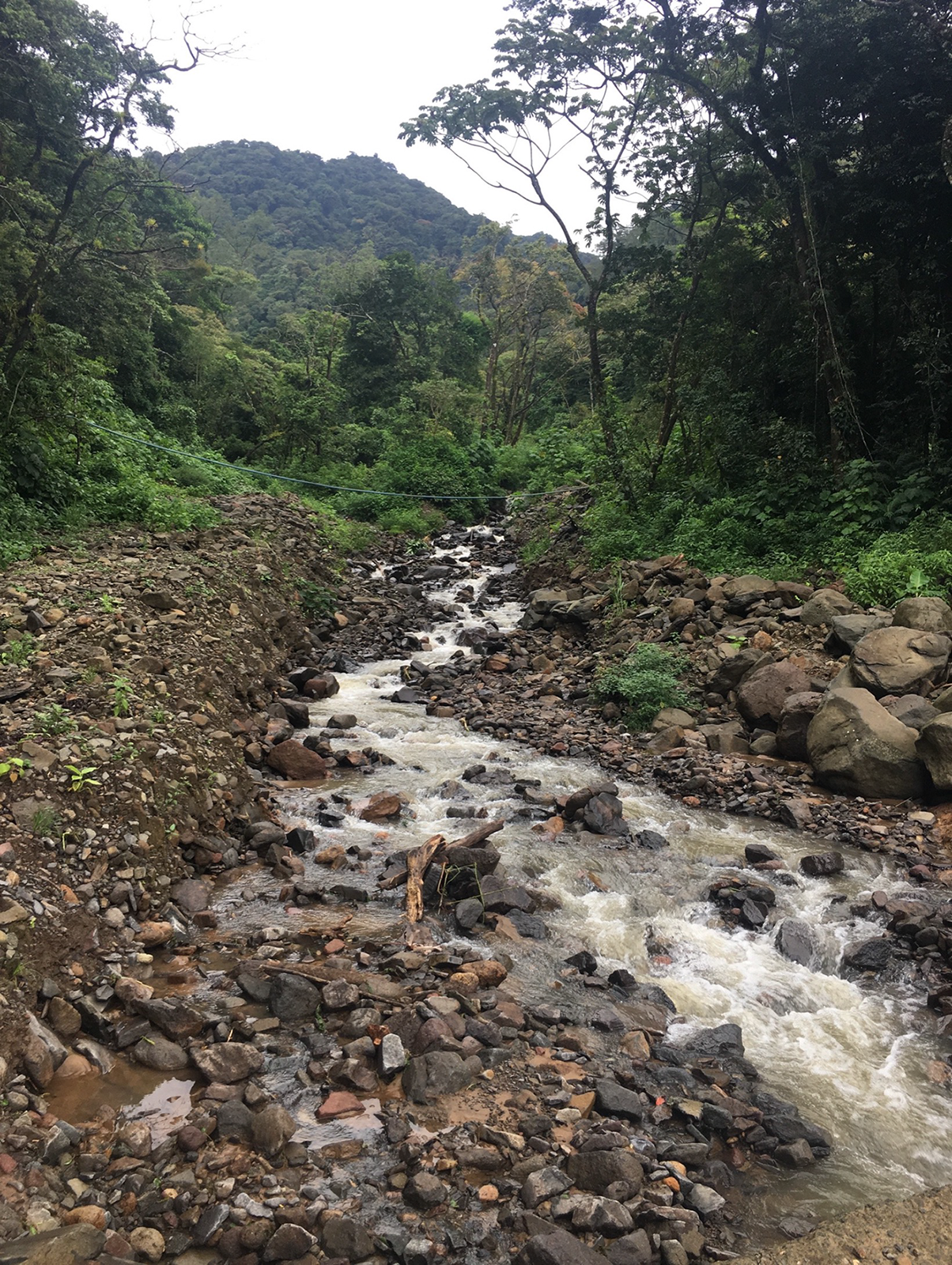
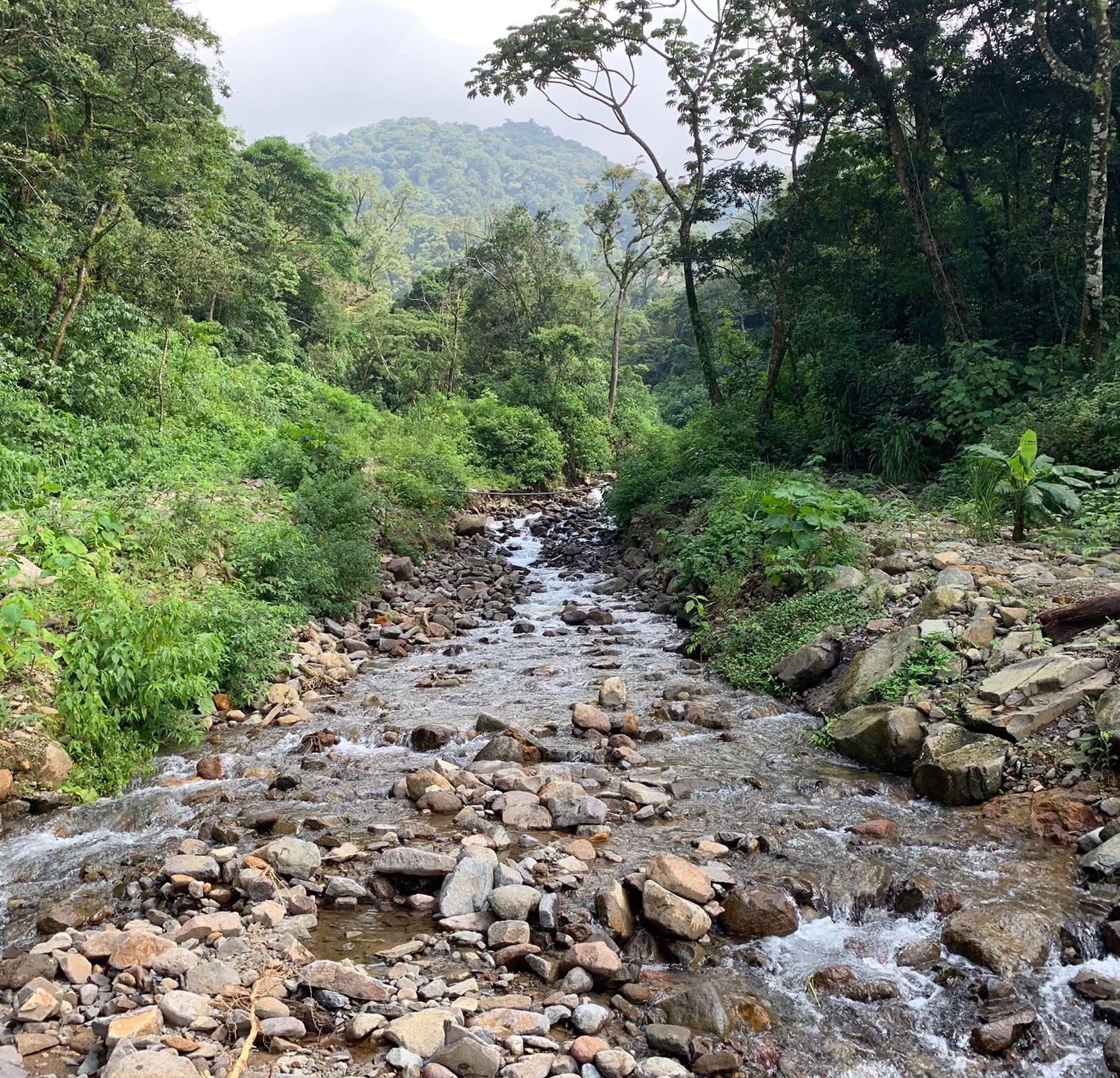

Results
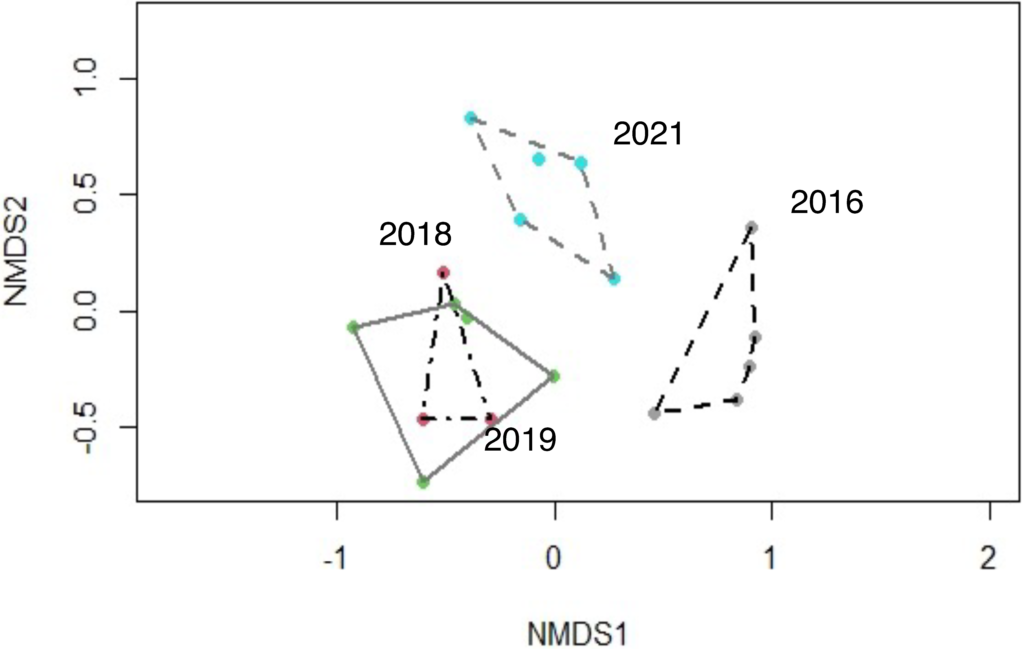
Figure 2: NMDS ordination plot showing macroinvertebrate assemblages based on abundance in 2016, 2018, 2019, & 2021. 2018 & 2019 diverge from 2016. The two years after Nate were most similar with a shift in community composition in 2021.

Alondra one year before Tropical Storm Nate
(2016), one year after (2018), two years after
(2019) and four years after (2021). Richness
in 2021 was similar to 2016.
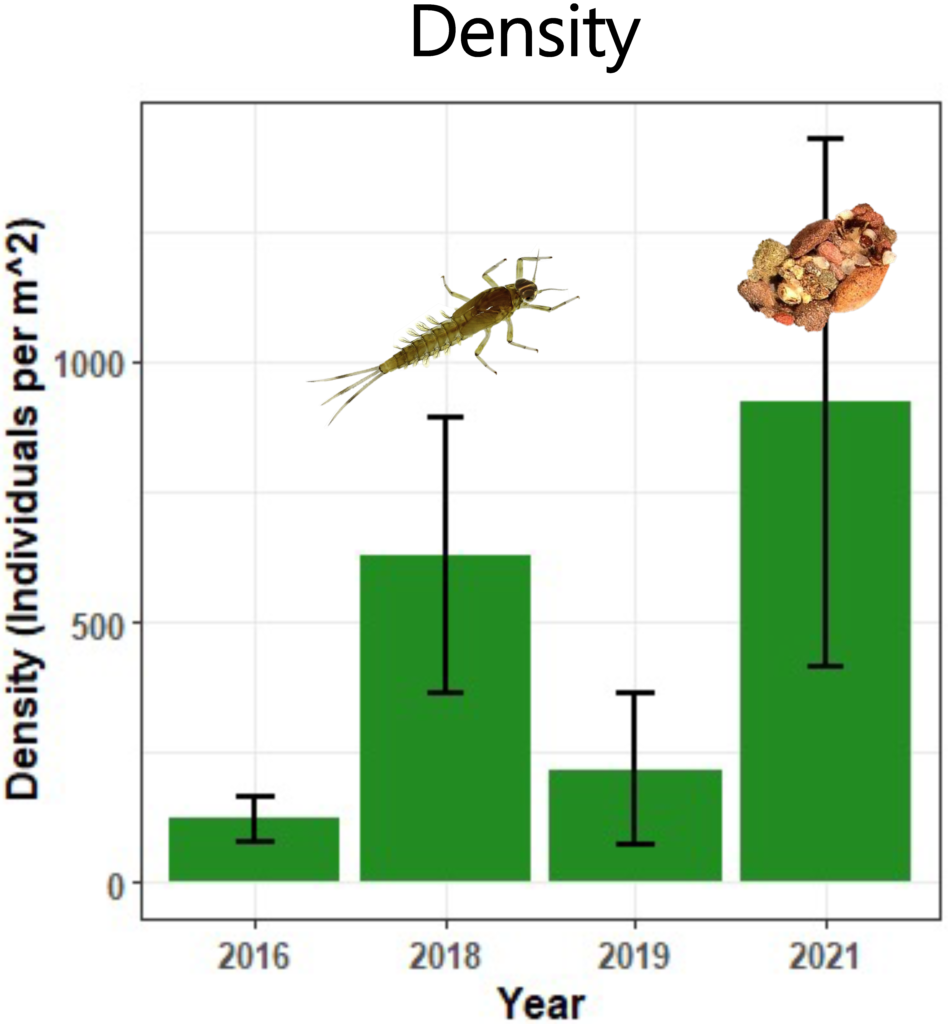
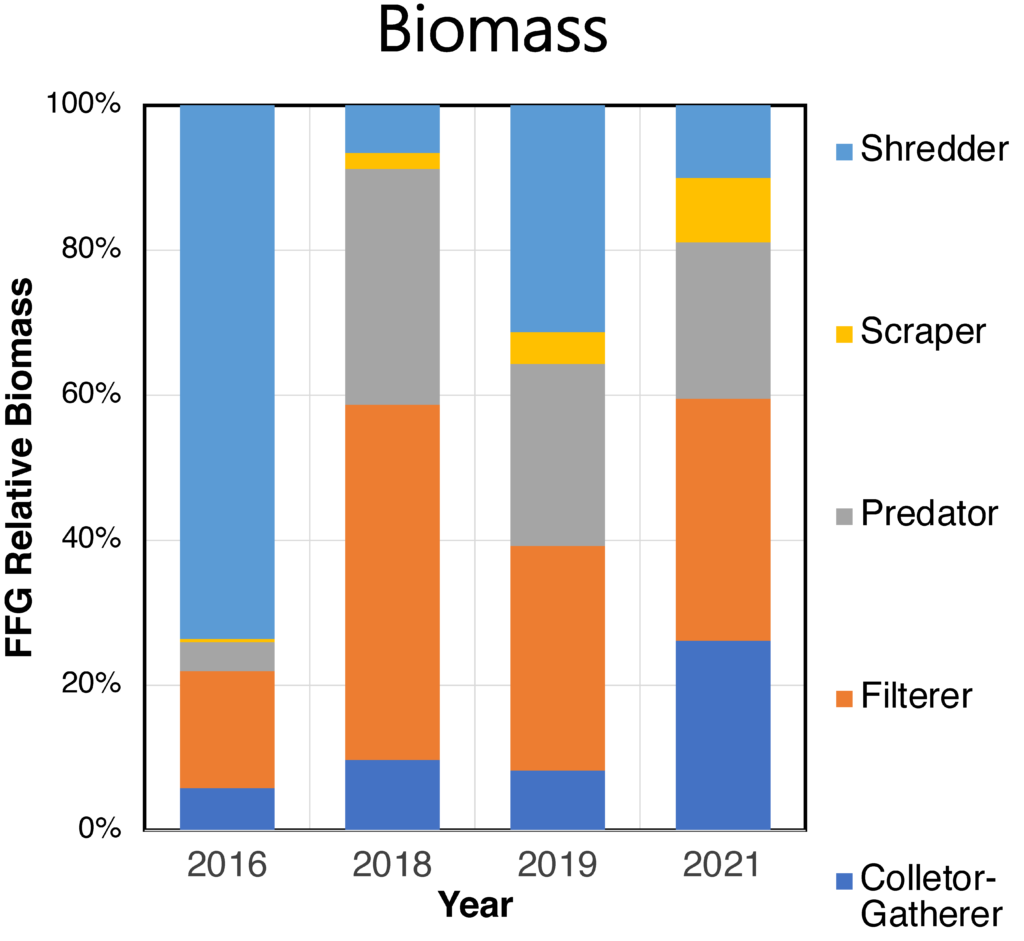
Conclusions and Next Steps
We have observed recovery in physical conditions and riparian habitat (Figure 1), and therefore we expect the macroinvertebrate community to reflect those changes. We found that four years after the initial disturbance, Alondra is showing signs of recovery. For this study we define recovery as the rate and manner in which an ecosystem returns to either its undisturbed condition or the path of chronological development after the disturbance.
Quantifying recovery is complex because the stream may never return to its pre-disturbance state (Kelly, 1990). However, the fact that the stream has increased in richness and shifted community composition indicates that the physical environment of the stream is recovering providing greater habitat diversity (Figure 3).
Our study is one of only a few to document macroinvertebrate community changes in a tropical stream following a major disturbance. As tropical areas
experience more frequent and intense disturbances, data like ours can provide insights into the process of stream recovery. A better understanding of stream recovery can better inform conservation and management decisions.
More info

Works Cited
Feeley, H. B., Davis, S., Bruen, M., Blacklocke, S., & Kelly-Quinn, M.. (2012). The impact of a catastrophic storm event on benthic macroinvertebrate communities in upland headwater streams and potential implications for ecological diversity and assessment of ecological status. Journal of Limnology, 71(2), 32. https://doi.org/10.4081/jlimnol.2012.e32
Gutiérrez-Fonseca, P. E., A. Ramírez, and C. M. Pringle. 2018. Large-scale climatic phenomena drive fluctuations in macroinvertebrate assemblages in lowland tropical streams, Costa Rica: The importance of ENSO events in determining long-term (15y) patterns. PLOS ONE 13:e0191781.
Kelly, J. R., and M. A. Harwell. 1990. Indicators of ecosystem recovery. Environmental Management 14:527–545.
Knutson, T. 2021, August 9. Global warming and Hurricanes. Geophysical Fluid Dynamics Laboratory. https://www.gfdl.noaa.gov/global-warming-and-hurricanes/.
Acknowledgements
We would like to Carolyn Cummins for her help in the field. Abiotic data was collected by the students in ECOL 3100. Lastly thank you to the staff and faculty at CIEE Monteverde for the use of their lab space and equipment.
Download Original PDF of Poster
